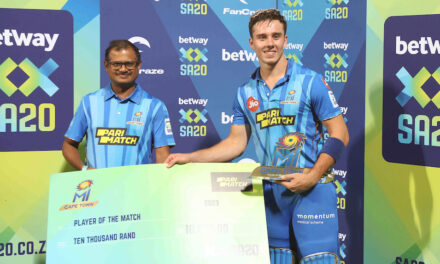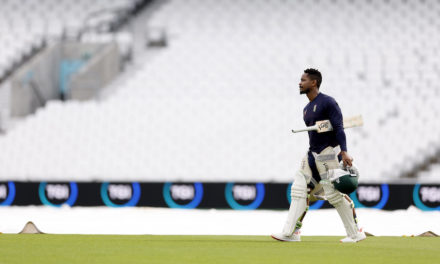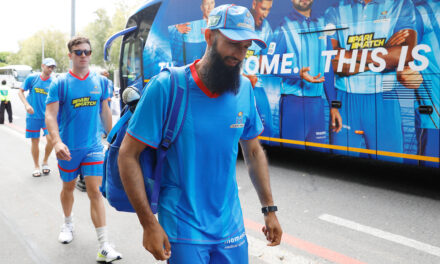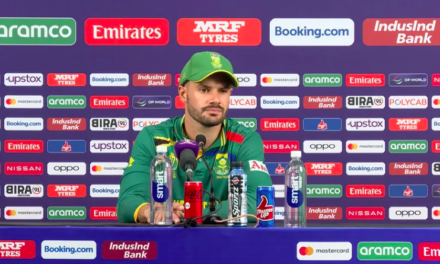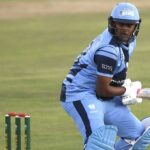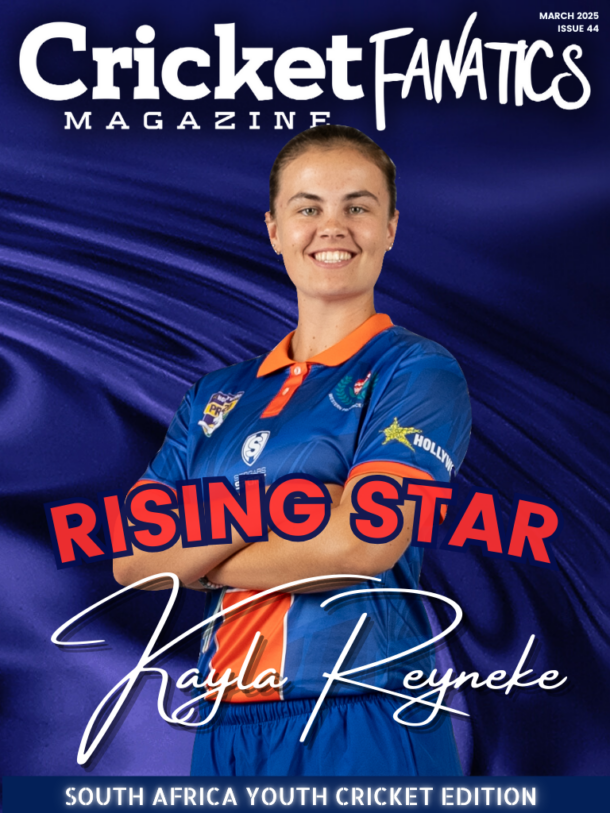The emergence of the Mzansi Super League has been favourable for cricket in South Africa, especially during this transitional period following the retirements of veteran Proteas, writes Abhai Sawkar.
It’s been a strategic start so far – all of the nationally contracted players take part in the entire tournament, and we get to see some of the best-uncapped talents in the country.
Top it off with a sprinkling of overseas stars and we get an event with high potential. There’s room for improvement, but more importantly, there’s been quite a bit of early progress.
The majority of recent limited-overs debutants for the Proteas have made it to international cricket on the back of strong performances in the MSL. Some have found it to be a smooth transition, while others are in the process of adjustment. Regardless of the situation, it’s proof that the standard of the MSL is steadily improving, slowly but surely catching up with the other T20 leagues around the world.
Over the course of the 2018 and 2019 tournaments, we’ve seen a number of promising players, both young and seasoned, throw their hat in the ring for greater opportunities. Let’s recap on some of the brightest stars from the MSL and where they stand now.
BATSMEN
Rassie van der Dussen
2018 MSL – 469 runs @ 58.62, 4 half-centuries, best of 96*
For starters, Rassie van der Dussen is probably the most prominent success story of the MSL. He’s had experience playing in various T20 leagues around the world before finally getting the much-coveted big break for the Proteas.
In 2018, he dominated the entire event for the Jozi Stars, who would eventually lift the trophy. He often steadied the ship at #3, but adaptability has been one of his key strengths – his ability to accelerate when required has frequently propped up his team, whether it’s batting first or chasing.
Finishing as the highest run-getter further paved the way for him to break into the ODI squad, and his breathtaking consistency earned him a berth in the World Cup squad. Interestingly enough, he’s the first and only player to cross 50 on debut in all three formats of international cricket.
Reeza Hendricks
2018 MSL – 412 runs @ 58.85, 2 centuries, 2 half-centuries, best of 108*
2019 MSL – 275 runs @ 39.28, 3 half-centuries, best of 80
When it comes to sustaining reliability in the MSL, opening batsman Reeza Hendricks is among the first names that come to mind. He finished as the joint second-highest run-scorer in the inaugural MSL and then scored the most runs for the Jozi Stars in the 2019 MSL.
In 2018, he was in tremendous touch, often providing the pleasant start and consolidating well throughout. Not known to be a big hitter, he fed his strengths of placement, timing, and occasional power to present himself. Hendricks has been an on-again, off-again feature in T20Is and at the time, he was looking to cement his spot as a World Cup bolter.
Unfortunately, his international form would peter out soon after the MSL and he’d miss out. However, he bounced back well in the following MSL, and he’s back in the fringes of the Proteas’ plans. Considering the fact that he averaged in the mid-’20s in both ODIs and T20Is, it’s been a struggle to translate the domestic success to international success, but anything is possible. At 30, he’s in his prime, and taking the initiative will be essential to make further progress.
Gihahn Cloete
2018 MSL – 330 runs @ 33, 4 half-centuries, best of 80
Another 2018 MSL graduate, the powerful wicketkeeper-batsman was a central figure at the top of the order for the Tshwane Spartans. The fourth-highest run-scorer, Cloete displayed his deftness when it came to building solid innings. While he wasn’t exactly known for his quick scoring, his calm approach garnered plenty of appreciation.
A 59-ball 65 against the Nelson Mandela Bay Giants on a trickier surface helped steer his side to a formidable score. The MSL exploits would soon materialize, bringing about a Proteas call-up for the T20I series in Pakistan.
After scoring 13 in the solitary game he got, he hasn’t played for South Africa ever since. Sadly, he didn’t get drafted in the MSL last year, despite the positive first impression he created.
Janneman Malan
2018 MSL – 305 runs @ 33.88, 2 half-centuries, best of 66
2019 MSL – 358 runs @ 44.75, 3 half-centuries, best of 99*
The new kid on the block – that’s the perfect description for the young Cape Town Blitz opener. He’s played a few seasons in franchise cricket for the Cape Cobras, and his free-flowing strokeplay at the top of the order has resulted in robust contributions.
When Proteas skipper Faf du Plessis decided to sit out in the remaining two games against Pakistan in early 2019, Malan got a T20I debut. After a steady debut MSL, he went into high gear last year. An unbeaten, domineering 99 from 59 balls in the first game against the Stars, a counterattacking 75 from 42 against the Durban Heat, and 60 from 41 against the Nelson Mandela Bay Giants all were glimpses of both his class and six-hitting prowess.
He topped off his home season with an imperious, unbroken 129, which guided South Africa to an ODI series win against a formidable Australia team. Having created quite a splash early in his career, Malan has a brilliant future ahead.
Temba Bavuma
2019 MSL – 232 runs @ 38.66, 1 half-century, best of 62
The industrious middle-order batsman in the Proteas Test side was, for a while, labeled as a longer-format specialist… until he scored a brisk century on ODI debut. He was yearning for more chances in the shorter formats, and an incredible performance in last year’s CSA T20 Challenge was the breakthrough for a T20I debut against India in October. More importantly, the catalyst for his transformation was his experiences in the 2019 MSL.
In 2018, he wasn’t a sure starter for the Durban Heat, and in the following tournament, he was tasked with captaining the previous champions, the Jozi Stars. It’s no secret that the drastic change in scenario added pressure, but from a personal standpoint, Bavuma had far better returns and was among the silver linings during a tough title defence.
At the international stage, Bavuma briskly scored 123 runs in the T20I series against England and often got off to a cantering start with his sturdy technique. The MSL has definitely played the underlying role in his metamorphosis as a T20 player.
Pite van Biljon
2019 MSL – 192 runs @ 48, 1 half-century, best of 62
The most recent T20I debutant for South Africa, the hard-hitting 34-year-old finally made his entry to the international stage on his reputation as a dangerous middle-order finisher as well as his vast domestic experience with the VKB Knights. In the MSL, his first noteworthy performance was in 2018 for the Jozi Stars, when he blitzed a scintillating 13-ball 42 (3 fours, 4 sixes) against the Tshwane Spartans.
It may have happened in a losing situation, but this was just the starter when it came to building impactful cameos. In 2019, van Biljon provided the priceless late impetus on multiple occasions, including the Eliminator, where it mattered most. A 32-ball 48 drove the Spartans past 160 against the Giants on a slower surface at Port Elizabeth. Van Biljon would finally earn a T20I call-up for the series against England, but he’d end up debuting in the subsequent T20I series against Australia. It was largely a forgettable outing both for him and the Proteas: van Biljon managed 24 runs in 3 innings.
On the whole, most of the South African batsmen had difficulty playing spin in that series. However, on a more fortunate note, the selectors have stated that they’re looking to identify a pool of players from which the ideal squad of 15 will be chosen – it would be fair to provide him (as well as any recent newcomer) with more game time.
BOWLERS
Duanne Olivier
2018 MSL – 20 wickets in 10 games @ 13.20, economy rate of 7.88, best figures of 3/30
2019 MSL – 7 wickets in 5 games @ 25.28, economy rate of 10.41, best figures of 3/39
The most successful bowler in the first MSL, Duanne Olivier hit the deck hard and took full toll of the situations at hand. As pressure was developing from the other end, Olivier was the strike bowler all tournament for the Jozi Stars. His pace and bounce were the key tools to rake in the wickets. Thereafter, he’d put together an indomitable exhibition of quality bowling in the Test series against Pakistan, in which he took 24 wickets in 3 games.
He’d go on and play a couple of ODIs, but he took many by shock when he announced that he confirmed a three-year Kolpak deal with Yorkshire and terminated his domestic contract with the Knights. He played his first county season and then returned home to participate in the MSL.
It was a relatively modest second outing, but more importantly, the wicket-taking knack was still ever so present. With the Kolpak rules have changed due to the UK’s secession from the EU, his status as a non-overseas county cricketer has been in limbo – should he continue to play county cricket, it’s very likely he’ll be classed as an overseas pro.
Anrich Nortje
2018 MSL – 8 wickets in 3 games @ 10.37, economy rate of 6.91, best figures of 4/32
2019 MSL – 6 wickets in 7 games @ 38, economy rate of 8.65, best figures of 3/31
The aggressive, strapping speedster burst onto the scene in 2018 with his raw pace that constantly jostled the opposition’s batsmen. In only his second game, Nortje bagged a four-wicket haul against the Durban Heat. After the very next game, he was sidelined from the rest of the event due to an ankle injury, but he created a significant impact in such a short space of games. He’d go on to get an IPL deal with the Kolkata Knight Riders, but a shoulder injury forced him to pull out.
He impressed in his first few ODIs thereafter and got chosen for the 2019 World Cup, but a hand injury during a practice session ruled him out. Fortunately, since then, he’s been able to break into all three formats of international cricket and has seen off some of the most difficult phases for the Proteas in Test cricket.
Even though the home Test series against England was another tough loss to digest, Nortje showcased his skills as a superb operator at first change as well as a dogged lower-order batsman. While his MSL performances from last year were decent, Nortje’s fighting spirit and resolute attitude have bolstered the confidence of the Proteas.
Lutho Sipamla
2018 MSL – 16 wickets in 10 games @ 20.56, economy rate of 8.89, best figures of 3/16
Among the top five wicket-takers in the 2018 MSL, four had the experience of international cricket – and one was a youthful, persistent right-arm seamer determined to rise through the ranks. Sipamla finished joint-second on the wickets chart, and even though his economy was a bit on the expensive side, his propensity to frequently take wickets more than compensated for that. He would finally get a T20I call for the series against Pakistan and Sri Lanka in February/March 2019.
Even though he took just three wickets across five games, Sipamla used his variations and changes in pace to handy effect, producing economical spells at crucial phases. While his 2019 MSL returns were a far cry from his successes in the previous edition, his flair and ability fetched him an ODI debut three months ago. It’s still early on for the youngster, but the initial headstart will be something to capitalize on.
Bjorn Fortuin
2018 MSL – 9 wickets in 8 games @ 22.11, economy rate of 7.96, best figures of 4/15
2019 MSL – 8 wickets in 10 games @ 29.75, economy rate of 6.43, best figures of 2/13
With Imran Tahir having rounded off his ODI career and Tabraiz Shamsi the heir apparent to become the frontline spinner, the selectors have made a strategic decision to broaden the list of prospective spin options for the Proteas. Left-arm orthodox spinner Bjorn Fortuin has displayed the highly sought consistency across formats over the course of multiple domestic seasons.
Not a huge turner of the ball, Fortuin often bowls his quota of overs early in the innings. While in the 2018 MSL he often was amongst the wickets, he’s become more of a containing and economical bowler in more recent times. His four-wicket haul in 2018 helped tear through the Cape Town Blitz top order, inflicting a capitulation that set up an easy chase for his team, the Paarl Rocks.
His first T20I series was in India, and he did commendably well to adjust to foreign conditions – he took three wickets in the two games, and the Proteas ended up squaring that series. In addition to his bowling, he’s more than capable down the order as a batsman.
Beuran Hendricks
2018 MSL – 12 wickets in 9 games @ 17.16, economy rate of 7.40, best figures of 2/13
He’s been in and out of the Proteas squad since he made his international debut in 2014, but his performances in the 2018 MSL created the pivotal momentum for him. Hendricks brings variety as a left-arm seamer, and his central role in the Jozi Stars’ flawless campaign two years ago gave him another crack in the shorter-formats squads.
A versatile bowler, Hendricks is known to swing the ball as well as mix things up towards the back end of the innings. Last year, he struggled with injury and made his first MSL appearance for the Giants midway through the tournament. However, since then, he’s had a taste of all forms of international cricket and even taken a five-wicket haul on Test debut against England at the Wanderers. His improving efforts got him a national contract for the 2020-21 season, a perfect reward for the tireless hard work he put in.
ALLROUNDERS
Jon-Jon Smuts
2018 MSL – 219 runs @ 31.28, 2 half-centuries, best of 62*
7 wickets in 9 games @ 17.85, economy rate of 7.81, best figures of 3/17
2019 MSL – 238 runs @ 26.44, 2 half-centuries, best of 73
6 wickets in 11 games @ 36, economy rate of 6.71, best figures of 1/3
The MSL has, for the most part, groomed quite a few quality batsmen and bowlers, but Smuts has been the most reliable all-rounder that’s come through the system. Another player with copious domestic experience, Smuts captained the Nelson Mandela Bay Giants and led confidently by example. In 2018, he scored the most runs for his side. He provided the top-order stability as well as bouts of crisp, brutal, leg-side hitting.
His handy left-arm spin makes him the complete package. He may have struggled to be a mainstay in T20Is, but it’s the ODIs where he announced himself to great effect. In the absence of Faf du Plessis, Smuts took two wickets and slammed a confident 84 to steer South Africa to a series sweep against Australia. And there’s one more thing to mention: there were serious questions about his fitness, which ruled him out of the India tour – but he’s come back from the MSL a much different cricketer.
Out of all the top performers that earned a national call-up following their MSL accolades, it appears that a majority smoothly progressed to the international stage. There definitely is a positive correlation between MSL success and the chances of getting a Proteas stint – but then again, it’s a test of how quickly players are able to adjust to a much higher standard of cricket.
The MSL is gradually developing as a breeding ground for future Proteas, and the priority will be having all bases covered when it comes to boosting the overall quality of the league. Let’s take the IPL, for example. The IPL features all the Indian national players, the crème de la crème of the domestic talent, and on average, the upper-tier overseas T20 players. To add perspective, based on empirical data, at times the quality of teams in the IPL marginally exceed that of international sides, believe it or not.
So far, there has been an upward trend, and several players have reaped benefits, not only those that recently wore the green and gold. Those that were on the fringes of their franchise teams have now been offered a confirmed contract either with their current team or a new team.
CSA got the ball rolling in 2018, and there are greater things planned for this year’s event, which includes the introduction of another two teams. Every successful product involves a methodical approach and a clear blueprint on what’s to come in the near future.
Disclaimer: Cricket Fanatics Magazine encourages freedom of speech and the expression of diverse views from fans. The views of this article published on cricketfanaticsmag.com are therefore the writer’s own and do not necessarily represent the views of the Cricket Fanatics Magazine team.
Photo: Muzi Ntombela/BackpagePix


